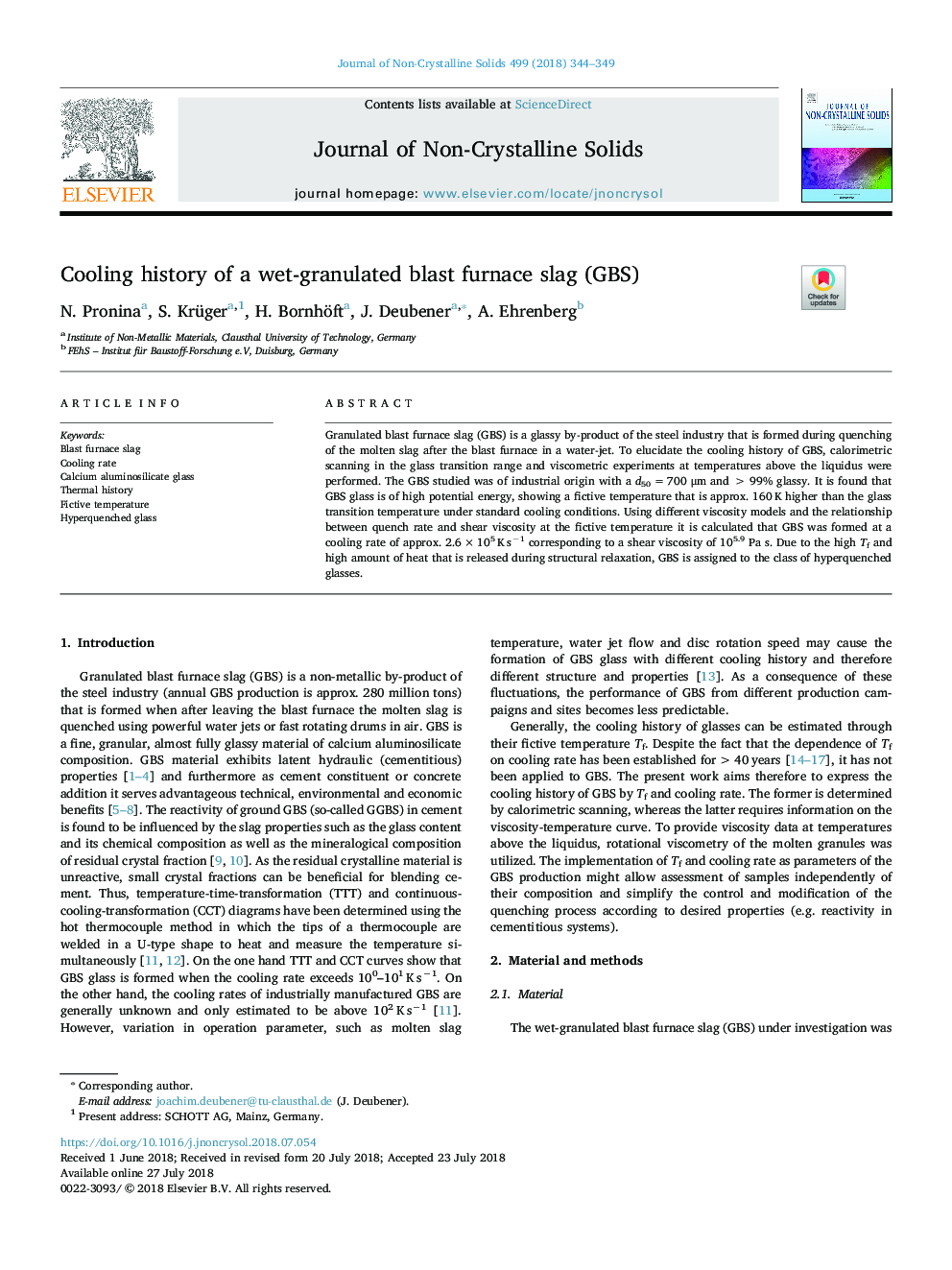| Article ID | Journal | Published Year | Pages | File Type |
|---|---|---|---|---|
| 7899575 | Journal of Non-Crystalline Solids | 2018 | 6 Pages |
Abstract
Granulated blast furnace slag (GBS) is a glassy by-product of the steel industry that is formed during quenching of the molten slag after the blast furnace in a water-jet. To elucidate the cooling history of GBS, calorimetric scanning in the glass transition range and viscometric experiments at temperatures above the liquidus were performed. The GBS studied was of industrial origin with a d50â¯=â¯700 μm andâ¯>â¯99% glassy. It is found that GBS glass is of high potential energy, showing a fictive temperature that is approx. 160â¯K higher than the glass transition temperature under standard cooling conditions. Using different viscosity models and the relationship between quench rate and shear viscosity at the fictive temperature it is calculated that GBS was formed at a cooling rate of approx. 2.6â¯Ãâ¯105â¯Kâ¯sâ1 corresponding to a shear viscosity of 105.9 Pa s. Due to the high Tf and high amount of heat that is released during structural relaxation, GBS is assigned to the class of hyperquenched glasses.
Related Topics
Physical Sciences and Engineering
Materials Science
Ceramics and Composites
Authors
N. Pronina, S. Krüger, H. Bornhöft, J. Deubener, A. Ehrenberg,
